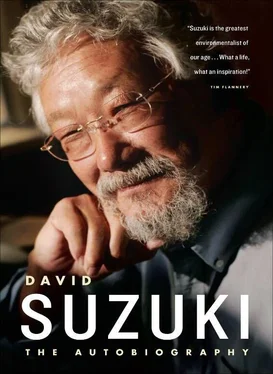One of the remarkable aspects of the IPCC work is the consensus of all but a handful of climatologists. Very few new ideas in science achieve such agreement among the overwhelming majority of experts. Consider biology — evolution is the fundamental basis on which our interpretation of life on Earth rests, yet there are hundreds of people with PhDs in biology who believe in the biblical version of Creation and deny evolution. Complete, 100 percent agreement is seldom achieved in science, so when most climatologists agree about something, their conclusions must be considered compelling.
Crichton ends his novel with a rant of his personal opinions, complete with references and footnotes that give the illusion he is writing a scientific treatise. He argues from examples in the history of medicine where consensus has proved to be wrong to discredit the IPCC conclusions. For example, doctors once universally believed that pellagra was the result of bacterial infection when it was actually a dietary deficiency. Physicians used to believe that deliberate bleeding cured a variety of problems and that ulcers could not be caused by bacteria. But in the world of medicine, as Harvard Medical School director Eric Chivian points out, doctors are trained to intervene when the evidence may not be absolute but where the dangers of not acting become too perilous. For example, one cannot be absolutely sure of a diagnosis of appendicitis before operating, because the risks of peritonitis and fatal septicemia from a ruptured appendix are too great. This is comparable to the need to act on global warming — except that here, as Chivian says, “we're dealing with the lives of billions of people.”
Some opponents of reducing greenhouse gas emissions accept that the climate is changing, but they argue that we need a higher level of certainty that we are the cause, and that until we are completely convinced, we can't afford to act. The Stanford University climatologist Stephen Schneider asks how much certainty is necessary to act. He believes the evidence of human-induced climate change is at least 70 percent certain, a figure that skeptics pounce on as far too uncertain for action. Schneider responds by asking rhetorically, if we were told a sandwich had a 70 percent chance of containing a deadly poison, would we eat it? Of course not. So if we are performing an experiment on the only home we have, planet Earth, what level of certainty do we require, especially if the warnings of scientists are accurate and the consequences of not doing anything will be catastrophic? Even if those scientists are wrong, taking action will lead to enormous benefits in health, greater energy supplies, cleaner environment, and vast economic savings.
The projected effects of rising greenhouse gas levels are based on the amount of fossil fuels burned, methane liberated from landfills, chlorofluorocarbons (CFCS) released, and so on. But it is known that there are massive deposits of methane, a much more potent greenhouse gas than carbon dioxide, frozen beneath the permafrost in the Arctic and on the ocean floor. Inuit people in the circumpolar countries have been warning for years that permafrost is melting, something even the rabidly anti-climate-change senator from Alaska, Ted Stevens, has finally acknowledged is happening in his state as dozens of villages report their buildings are sinking. As permafrost melts, it will liberate massive amounts of methane into the atmosphere, accelerating the warming process far beyond the predictions of current computer models in what is called a positive feedback loop: rising levels of greenhouse gases induce warming, which melts permafrost, which in turn releases more greenhouse gas, which accelerates the warming even more.
In addition, the well-documented melting of polar ice sheets may have catastrophic effects on the movement of heat through ocean currents. There are enormous movements of water masses through the Atlantic and Pacific oceans. In the North Atlantic, water from the equator absorbs heat, which is moved by currents northward along the coast of Europe, raising the winter temperature above the levels expected for that latitude. As that water mass releases its heat and cools on its passage along the coast of Europe, it curves around and sinks at its northernmost point, slowly making its way south deep in the ocean. It is like a continuous stream of water through the ocean.
As ice sheets and glaciers melt more rapidly, fresh water floods the ocean and interferes with the current. This flooding can happen rapidly and has occurred in the past, shutting down the ocean currents and thereby bringing about a colder period or ice age in Europe. It seems counterintuitive that global warming might shut down the “heat engine” of this current and cause a catastrophic cooling of Europe, but in November 2005, scientists reported in Nature that currents appear to have slowed by 30 percent.
EVEN AS THE SKEPTICS persist in their claim that the IPCC scientists are missing or ignoring bits of evidence that “disprove” climate change, there are two types of evidence I find overwhelming. One comes from nature itself. If warming occurs, animals and plants that live within a certain temperature range will be forced to move to stay within that range. For organisms on mountainsides, that can be achieved by moving up. In a Nature of Things program entitled “Warnings from Nature,” scientists documented that very kind of movement. In another case, a bird-watcher in the American Midwest has carefully recorded the comings and goings of birds through the seasons for fifty years. Her records clearly show that migratory birds are now arriving in her backyard up to two weeks earlier and leaving up to two weeks later. It's hard to believe that observational biases could be responsible for these results.
For me, the most powerful data are the annual atmospheric carbon dioxide levels extracted from the Antarctic ice sheets. In the topmost layers recording the most recent years, the carbon dioxide signature inflects sharply upward, rises steeply over the past decade and a half out of the background “noise,” and now reaches a height beyond anything ever seen.
BY 1997, GLOBAL CONCERN about climate change had grown enough to warrant a gathering of delegates from most countries in the world at Kyoto, Japan. They were meeting to discuss a protocol for reducing emissions, with a goal of reaching a balance between emissions and the absorptive capacity of the biosphere. Collectively, humans were producing twice as much greenhouse gas, especially carbon dioxide from burning fossil fuels, as Earth could reabsorb, so overall emissions had to be reduced by 50 percent. But since countries like Canada, Australia, and the United States were disproportionately high emitters, our targets would eventually have to be reduced by 85 to 90 percent.
I found myself reluctantly attending this conference along with staff of the David Suzuki Foundation. I say reluctantly because, at these massive international affairs, much of the decision making goes on behind closed doors while groups such as ours merely buzz around like annoying gnats.
Kyoto is the cultural hub of Japan, and stepping out of the Shinkansen (bullet train), we were confronted with that strange contradiction of Japan, the traditional domes and pagoda shapes of its temples and the garish signs and monuments in plastic. After dropping off our luggage in our tiny hotel rooms, we walked through a light rain past the many shops and malls packed with Japanese shoppers. We were in a hurry, with little time to sightsee or shop or even seek out some good restaurants. When we reached the meeting halls, we were greeted by Green-peace's large blowup of Godzilla, the fire-breathing monster, created by garbage, a perfect metaphor for humanity's effects on the planet.
Читать дальше


![David Jagusson - Devot & Anal [Hardcore BDSM]](/books/485905/david-jagusson-devot-anal-hardcore-bdsm-thumb.webp)









